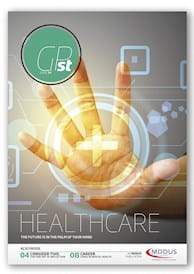IT can be easy to forget just how crucial confidentiality is to providing effective healthcare. Patients can divulge the most desperate personal details in seeking help – and without this promised trust more than a few might die simply out of a fear of disclosure. Confidentiality lies at the heart of the doctorpatient relationship, and in an era in which access to personal information is constantly expanding, the requirement to safeguard patient data grows ever more complex.
On 25 April new GMC guidance on all aspects of medical confidentiality will come into effect. Confidentiality: good practice in handling patient information reflects an extensive revision of the existing guidance published in 2009. It is intended to address not just new digital challenges but also changing patient expectations, the growing multi-disciplinary and multi-agency nature of healthcare, and an evolving legal and regulatory context.
A detailed review of the core guidance began in 2014 and included seven additional explanatory statements setting out how the principles apply in particularly “difficult” situations, such as reporting gunshot and knife wounds or disclosing information about serious communicable diseases.
Information was gathered from a range of sources, including an analysis of the type of enquiries the GMC receives on confidentiality-related issues and also those arising in the context of fitness to practise cases. In addition, the GMC commissioned surveys and held roundtable events to explore the views and expectations of patients around how and why their personal medical information might be disclosed. Other relevant organisations including the MDDUS were also consulted.
Healthcare law professor at University College London, Jonathan Montgomery, chaired the expert group overseeing the revision. He commented on the GMC website: “From my point of view, the main challenge for us was building a good understanding of patient expectations when it comes to confidentiality. There are some areas where we found that the health service is already using data in ways that patients are unaware of – and not particularly comfortable with.
“For example, the NHS sometimes uses non-NHS staff to make preparation of letters more efficient. Some of the focus groups we spoke with demonstrated a bit of anxiety about this. Yet, there were other areas where patient expectations run ahead of what the NHS is actually doing. Patients told us they shouldn’t have to keep telling their story to the health service. They expect key information to always be available to the people looking after them.”
Another problematic area for doctors addressed in the new guidance is recognising the significant role that family and carers can play in providing patient support – and how can you have conversations to reassure people their loved one is getting the right care without breaching confidentiality? “We’ve given more advice on how doctors can have these discussions with families without overstepping the mark,” said Montgomery. “What we’re aiming at is that families don’t experience a wall of silence from health professionals, while making sure these conversations don’t rob the patient of their right to privacy.”
The revision group also considered the implications of technological developments – most significantly the shift away from using “physical patient records” controlled by one doctor making individual choices on whether to share that information.
“Now, records are held in IT systems and accessed electronically in many different places by lots of different people who need to contribute to the record, or use that information for a defined purpose. This isn’t new, but the scale of it has grown,” said Montgomery.
In its scoping and evidence-gathering activities the GMC found that the fundamental principles set out in the existing confidentiality guidance were still sound but more emphasis was needed to ensure that the revised guidance:
- was easier for doctors to refer to and follow
- placed a stronger emphasis on the importance of sharing information for direct care
- distinguished more clearly between direct care and other uses of patient data
- provided more advice on decisions about sharing information with a patient’s friends and relatives
- better addressed considerations that apply to disclosures about adults at risk of harm
- made the legal framework for disclosure more explicit, especially on data protection responsibilities
- clarified advice on public interest justification for disclosure of patient data for secondary uses, such as healthcare service planning and research.
One innovation in the new guidance is a decision-making flowchart to help doctors “ask the right questions, in the right order” to establish the legal basis for any disclosure – and when the guidance comes into effect in April, additional resources and case studies will be published for doctors and patients.
Access the new guidance at www.gmc-uk.org.
Jim Killgore is an editor at MDDUS
This page was correct at the time of publication. Any guidance is intended as general guidance for members only. If you are a member and need specific advice relating to your own circumstances, please contact one of our advisers.
Read more from this issue of Insight Primary

Save this article
Save this article to a list of favourite articles which members can access in their account.
Save to library

